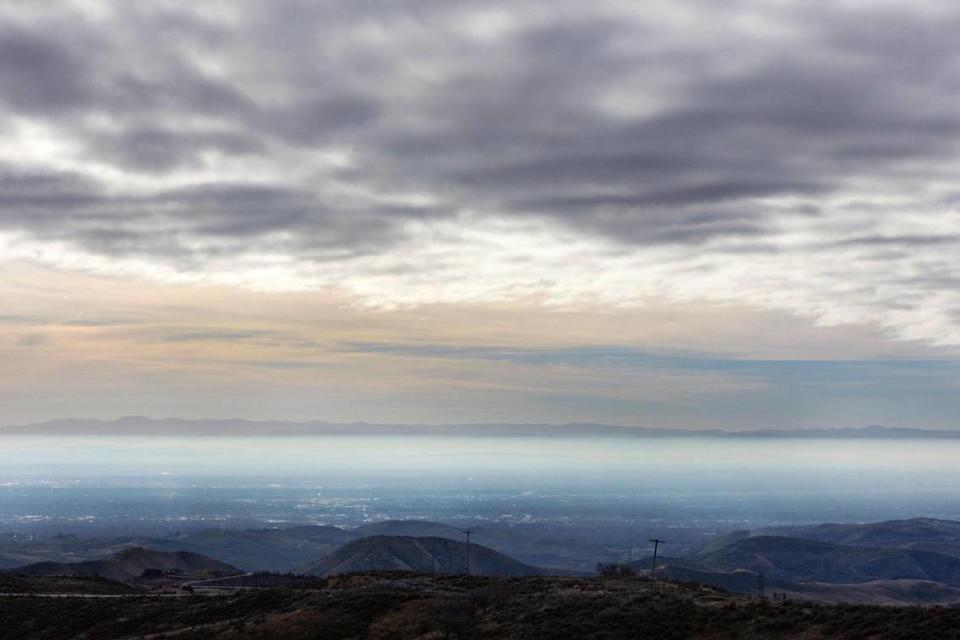Curious what the weather term ‘inversion’ means? Here’s what it is, why it happens in Boise
Drive up to Bogus Basin right now and look out over the Treasure Valley; you’ll see a haze hanging over Boise and its surrounding cities.
But for those below the haze … the view is not so interesting.
The phenomenon is a byproduct of inversions. You may have heard of them — it’s pretty hard not to if you live in Boise. It’s certainly not something unique to Idaho, but the Treasure Valley is particularly susceptible to inversions through the winter months because of its geological status as a valley.
But like other weather terms like convection and trough, for many people, inversion is one of those terms you hear of but never really know what it means.
“Inversion means inverting the normal temperature profile,” Idaho News 6 chief meteorologist Scott Dorval told the Idaho Statesman in a 2022 interview.
“We get warm air over the top of the cold air; that’s an inversion,” Dorval continued, “and that traps anything that’s produced; moisture or pollution gets trapped below that warm layer.”

Why do inversions happen?
As warm air sweeps over the region, cold air already permeating the area drains into the valleys. That phenomenon becomes even more likely when snow is on the ground when cold temperatures are already present along the valley floor.
As the cool air sinks, the warm air rises over the top and traps the cold air below. If you travel from downtown Boise to the top of Bogus Basin Road, you will see the temperature rise instead of fall, the reverse of what is typically seen when heading to a higher altitude.
That flip in the temperature progression, from colder at the bottom to warmer higher up, is called inversion.
So, going back to the view from Bogus Basin — why does a haze hang over the Valley under inversion conditions?
Think of when oil and water are put in a beaker together. The oil will rise to the top, and the water will sink to the bottom. That’s just like what happens with the cold air at the bottom and the warm air at the top. The meeting point of the two is where condensation forms and causes a haze.
“(The haze) traps more and more pollution,” Dorval said. “And any moisture that’s melting from the snow during the day goes into the air, and it will start to cause some fog and low clouds to form.”
️ Take a look at the inversion from above at @BOGUSBASIN!
Wonder why inversions form? Take a look at this infographic that explains the process #idwx #orwx pic.twitter.com/bR705K2ZVn— NWS Boise (@NWSBoise) December 13, 2023
Air quality conditions in Boise
Lastly, the pollution that gets trapped in the Treasure Valley is what can cause the air quality to decrease.
The National Weather Service in Boise issued an air stagnation advisory until Friday at 11 p.m. as inversion conditions continue to settle in the area. The advisory warns that an inversion and stagnant air can trap pollutants near the surface, causing breathing problems for those particularly sensitive to the pollutants.
“When we have inversions, we’re trapping basically the pollution, and so while we’re in this inversion, we will likely have moderate air quality,” Dorval said. “It’s not really bad at all compared to what it’s like when we have the wildfire smoke in the summer and in the fall. But you know, for people that are sensitive to it, it can be an issue.”

